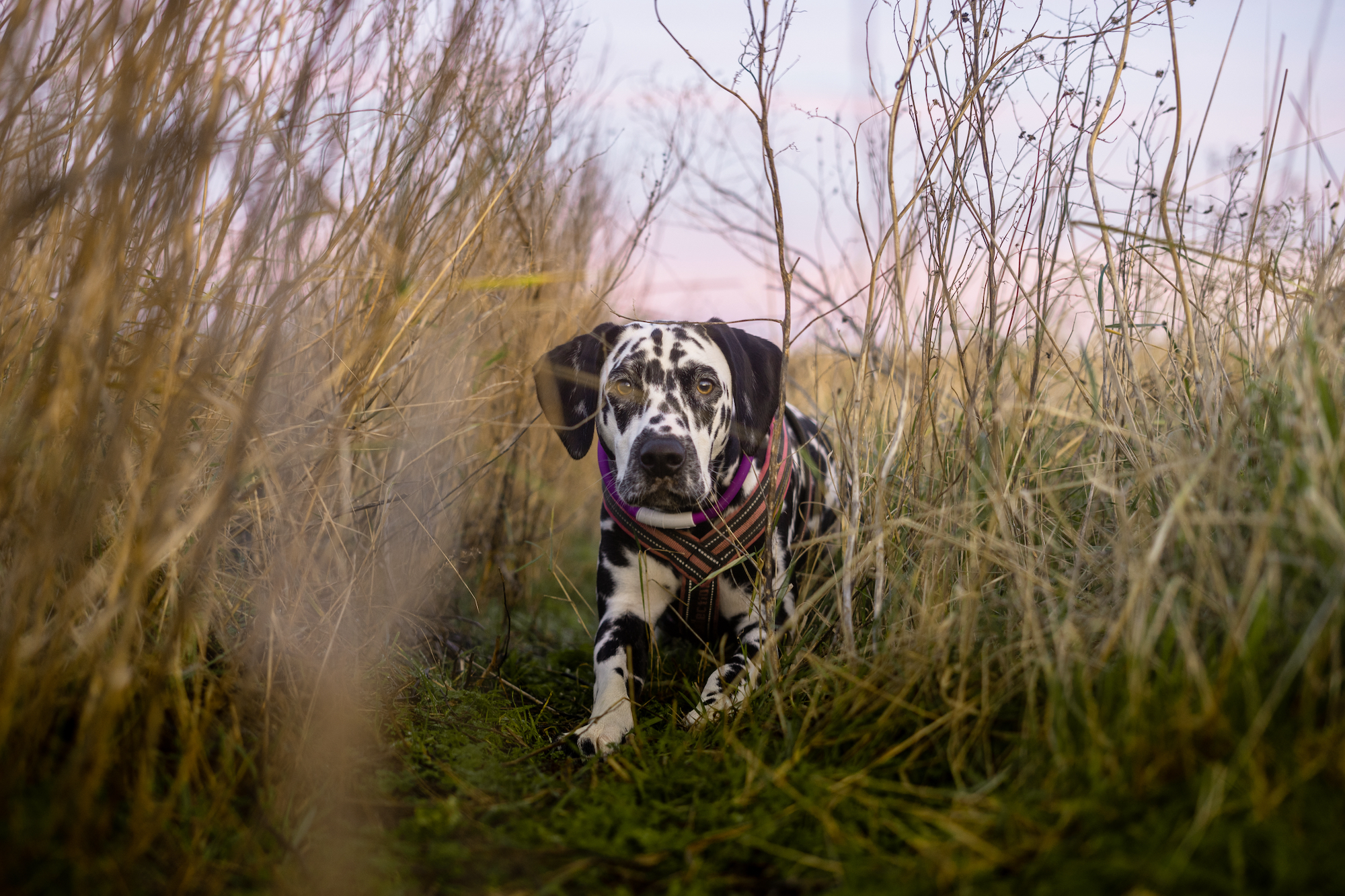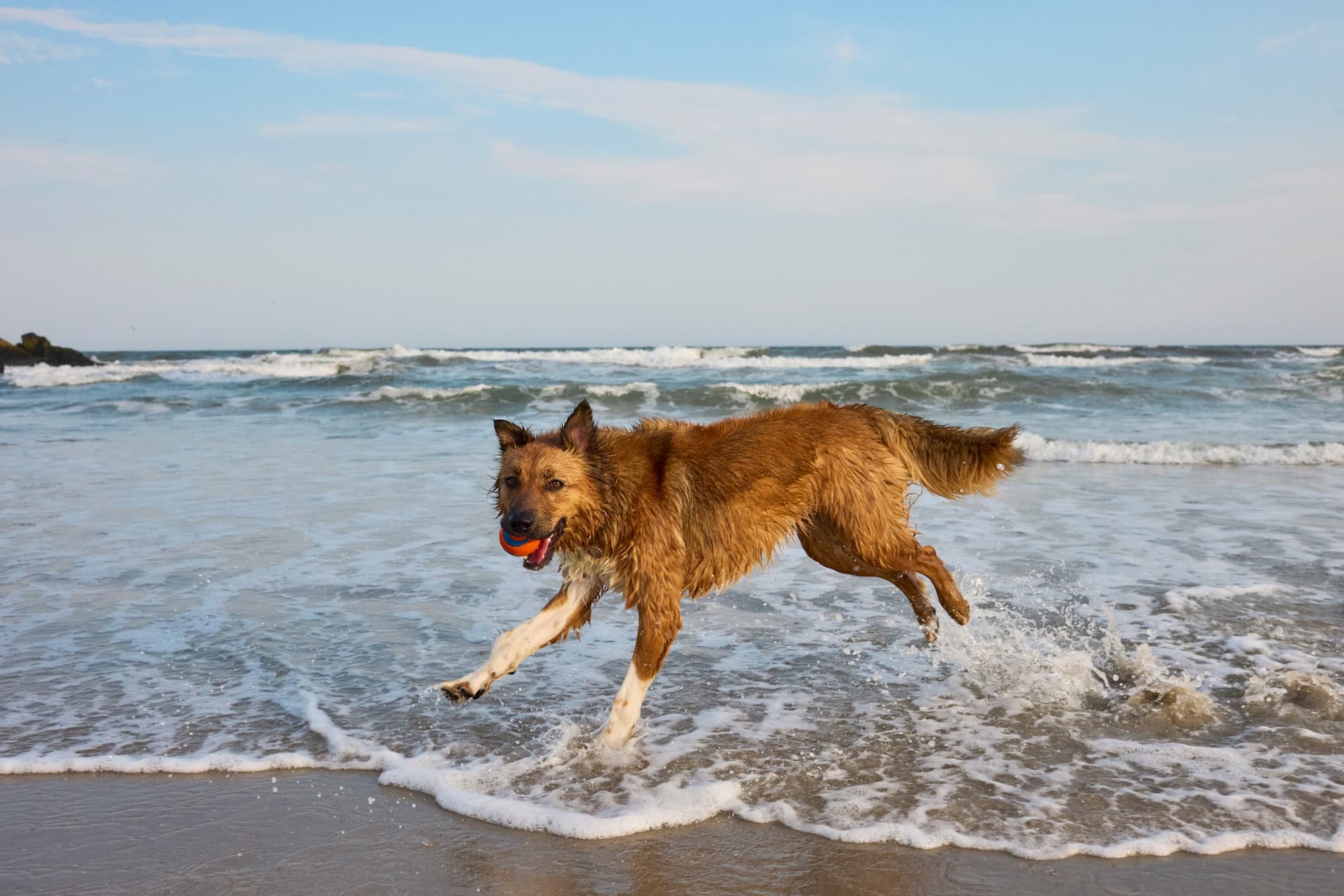Human noses are… good. They’re fine. We can detect the wafting fragrance of spring flowers or summer dumpsters. We can transport ourselves back in time by smelling a perfume or a plate of food. Our sensory abilities are nothing to sneeze at.
But when you get a whiff of all the seemingly miraculous things dogs can perceive through their noses, you gain an appreciation for how amazing our canine friends really are.
Some dogs can use their noses to sniff out cancer and, as recent scientific discoveries show, to detect body heat. As if that wasn’t stunning enough, a dog’s nose is such an instrument of precision, it can recognize things that have happened in the past, in one specific spot, with just a few sniffs.
No wonder your dog doesn’t want to walk in an orderly fashion down the street as much as they want to zigzag forth, sniffing every leaf, blade of glass, and mailbox. This olfactory exploration is a dog’s version of getting sucked into that new Netflix series—there’s a whole story of smells unfolding before them.
There are lots of things about noses we should know as dog lovers. Let’s take a deep-dive into their olfactory organs—what they can do, how they work, and how you can best take care of your dog’s most sensitive part.
How does a dog’s nose work?
While humans have about five million olfactory receptors in their noses, dogs are said to have around 300 million. Dogs also have what’s been called the “second nose.” It’s the vomeronasal organ—alternatively known as Jacobson’s organ. Located in the nasal cavity near the roof of the mouth, and wired to a whole other part of a dog’s brain than the rest of the nose, this amazing organ allows dogs to detect specific compounds. Adult dogs use this piece of gear to detect pheromones and potential mates, among other things, and puppies can use it to find the source of mother’s milk.
With all those olfactory cells and the vomeronasal organ going for them, dogs don’t just smell more things than we do; they perceive and process the world differently. While dogs’ brains are smaller than ours (generally), the area in their brain that’s devoted to smell is 40 times larger than in humans.
“Specialized cells called olfactory neurons are used to detect odors,” says Dr. David Dorman, DVM, and Professor of Toxicology at North Carolina State University’s College of Veterinary Medicine. “Dogs have many more of these cells compared to people. A dog’s nose is often 1,000 times or more sensitive than our human noses at detecting an odor. This allows dogs to detect some odors at air concentrations of one part per billion or lower.”
In case you’re wondering just how small that is, it’s incredibly, incredibly small. “Detecting one part in a billion is like finding proof that a packet of sugar has dissolved in an Olympic-sized swimming pool,” Dr. Dorman says.
The structure of the nose is the secret to its amazing ability to detect, and understand, smells. A dog’s nasal cavity is divided into two separate chambers and opens into two nostrils, or nares, that can wiggle independently and that can take in smells separately. As a dog sniffs, particles and compounds are trapped in the nasal cavity by mucus while scent receptors process them. Scent particles are also trapped on the moist exterior of the nose. Some of the inhaled air goes to olfactory analysis and some of it goes to the lungs so your dog can breathe! As a dog exhales, new odors enter the nose through the slits in their nose, to keep a steady stream of odors flowing.
“One of the main functions of the nose is to warm the air,” Dr. Dorman says. Warming inspired air so that it’s closer to body temperature makes it easier for the lungs to function. “In many ways, the dog’s nose is similar to a car radiator to achieve this function. It achieves this by having multiple folds that increase the surface area. Because dogs rely so much more on their noses, more of the air they breathe comes in contact with the olfactory neurons that detect odors.”
Dogs not only have more olfactory neurons, but they also have more types of olfactory receptors than we do. “An odor is the result of one or more chemicals in the air,” Dr. Dorman says. “Our bodies produce hundreds of different types of olfactory receptors that bind to these odor-producing chemicals. Animals with more olfactory receptors can detect more of these chemicals in the air and can detect more odors.”
Sniffing out disease
Studies, and anecdote, have shown that dogs can use their amazing noses to detect the presence of diseases, including cancer. The first recorded case of canine cancer detection dates back to 1989, when two British dermatologists reported that a dog was persistently sniffing a spot on their owner’s thigh, which, upon examination, turned out to be a malignant melanoma. In another story, a dog “insisted” that a specific area of skin—already pronounced melanoma-free by doctors—was still cancerous. Upon biopsy-ing that area, physicians found the dog was right; the spot still contained cancerous cells.
While Dr. Dorman maintains dogs’ noses are not unique –“many other species of animals including elephants, horses, cows, bears, and cats… may have an equal sense of smell (or even better)”—dogs happen to be highly trainable, and “more willing to work with a human partner.” Both of these factors—dogs’ keen sense of smell and their willingness to work with humans—make them excellent partners in cancer detection training. A study published in Integrative Cancer Therapies found that five trained dogs accurately identified lung cancer in 99% of patients tested; similarly, the five dogs accurately identified breast cancer in 88% of patients. All the dogs had to do was sniff the patients’ breath.
As Live Science reports, there’s still some progress to be made until dogs become the go-to diagnostic resource in medical facilities. “The success rate varies considerably and often depends on the dog’s ability and the type of cancer,” notes Dr. Dorman. “This remains a research topic and has not been used routinely by doctors.”
In the meantime, service dogs rely on their acute sense of smell to detect health issues in their human before an incident happens. Service dogs can be trained to smell an epileptic seizure about 45 minutes before it happens, and some dogs can warn diabetes sufferers about an imminent hypoglycemic attack.
Feeling (and smelling) the heat
Recently, a team at Lund University in Sweden and Eötvös Loránd University in Hungary found that a dog’s snout could actually sense “weak thermal radiation,” a skill found in just a handful of other animals including black fire beetles, certain snakes, and the vampire bat. This capacity is centered on the delightful, cold, and nerve-packed tip of a dog’s nose—the rhinarium. The report qualifies a dog’s cold nose as a heat sensor, used for detecting warm-blooded prey.
A dog’s ability to pick up, and process, long-gone scents makes them excellent at other human-helping tasks, like tracking missing persons, and detecting everything from explosives and drugs to bed bugs. Dr. Dorman notes that dogs have been used by organizations including the USDA to detect foods coming (being smuggled) into the U.S., and the National Oceanic and Atmospheric Administration (NOAA) to detect whales by sniffing out their feces. Various other government bodies use canines to detect explosives and narcotics and in search and rescue.
Could you smell me the time?
That’s not all—Alexandra Horowitz, Ph.D., psychology professor and head of Barnard College’s Horowitz Dog Cognition Lab at Columbia University, has said that she believes a dog’s nose can, in a way, smell time.
“Smells in a room change as the day goes on,” Horowitz told NPR. “Hot air rises, and it usually rises in currents along the walls and will rise to the ceiling and go kind of to the center of the room and drop. If we were able to visualize the movement of air through the day, what we’re really visualizing is the movement of odor through the day.”
Horowitz added, “The future, in a way, is smelled on a breeze from up ahead or around the corner.”
What nose ailments should dog owners look out for?
Now that we have established how exceptionally sensitive dogs’ noses are, you can understand why it is important for pet owners to properly care for these precious parts.
According to Dr. Mason Romero, DVM, and Veterinary Advisor for BetterPet, if your dog’s nose is displaying any of the following symptoms, you should consult your veterinarian:
- Loss of pigment of the hair or the skin of the nose (depigmentation)
- Reddening of the skin
- Loss of the top layer of skin (this may present as ulceration or scabbing)
- Dry, mucoid or bloody nasal discharge
- Scarring
- Loss of hair (alopecia)
- Solid masses or growths
Because dogs’ noses are so sensitive, they can be susceptible to various ailments. Dr. Romero advises all pet owners to be wary, as the above symptoms could potentially be indicators of the following common ailments:
- Infections or abscess
- Parasites such as Demodectic mange
- Fungal infections such as ringworm, aspergillosis, cryptococcosis, and sporotrichosis
- Immune-mediated disease
- Inflammatory conditions such as insect bite reaction
- Inflammatory conditions of the eyes (which can also impact the nose) and hypersensitivities (contact with plastic food bowls or topical medication hypersensitivity)
- Trauma
- Tumors or cancer
- Infectious diseases such as Distemper virus
If your dog’s nose is showing any of the above symptoms, you should contact your veterinarian.
What does it mean if your dog’s nose is running?
The color and texture of a dog’s nose discharge can tell a lot about what’s going on internally. “A runny nose is a common clinical sign I see in practice,” Dr. Romero says. The discharge can range from clear to very mucoid.
Often, clear nasal discharge is not something to be overly concerned about, he says. Should the discharge become more mucus-like in texture, it may be an indicator of a health issue that requires medical attention. “When the discharge turns to mucus, we get more concerned,” Dr. Romero says. “Possible causes for mucoid discharge could range from something simple like environmental allergies to more severe causes like tumors in the nasal passage or nasal foreign objects.”
In one scenario, Dr. Romero says a patient of his was experiencing mucoid discharge, which led him to find an unlikely item in the dog’s nose. “I actually had a four-pound Yorkie in the past that had mucoid nasal discharge for months,” he says. “Finally, we were able to do a rhinoscopy (a procedure in which a tube-like instrument examines the inside of the nose) and pulled a four-inch piece of grass out the nose!”
A runny nose in dogs could also indicate something about the indoor environment. For example, if you constantly diffuse essential oils, that could be causing your dog’s clear, runny discharge. Remember: Dogs are much more sensitive to smells than humans are, so diffusing essential oils could begin to irritate your dog’s super perceptive nose.
If your dog’s nose is displaying abnormal symptoms, contact your veterinarian. “The best advice is to work with your veterinarian to keep your dog healthy,” Dr. Dorman concludes. “Don’t try to treat a condition without seeking out this advice.”
What about everyday care of dogs’ noses?
Taking good, everyday care of your dog’s nose is crucial to protecting one of their most vulnerable parts. As with all other parts, noses can benefit from a fresh diet that provides all the nutrients that keep eyes, noses, and coats in top form.
Since some breeds are more susceptible to nose issues than others, some pet owners may have to be more vigilant. “Dogs with short muzzles like boxers or bulldogs (brachycephalic breeds) commonly will have a dry nose,” Dr. Romero says. Short-nosed dogs also have a harder time breathing in oxygen compared to their longer nosed friends.
If you notice a dry, cracked nose, it might be tempting to apply a moisturizing lotion, but many vets advise caution with off-the-shelf topicals. Depending on the condition, the nose may get more infected if you apply a non sterile cream onto a sore. And you should use caution with creams containing vitamins—Vitamin D toxicosis, for example, can occur with creams containing this ingredient.
If your dog is experiencing a runny nose with any kind of discharge, consult your veterinarian to rule out any health issues.
What are some common myths about dogs’ noses?
At some point during your time as a dog guardian, you may have heard that the nose is the window to a dog’s hydration. According to Dr. Romero, this is simply a well-perpetuated myth.
“I often hear, ‘Her nose is dry, so she has to be dehydrated,’” Dr. Romero says. “As veterinarians, we do not use the nose as a determining factor for dehydration. Whether the nose is cold, wet, or dry does not correlate with a pet being hydrated or dehydrated.”
Another common myth is that a dry, warm nose automatically means a dog is sick. Actually, dry, warm noses can mean almost anything. A dog’s nose can be warm and dry upon waking up, after vigorous exercise, and after exposure to outdoor conditions. A dog’s nose might also become drier as a sign of getting older.
Let them sniff…
A dog’s nose is wonderful; it can do everything from tracking a squirrel to sensing a life-threatening disease. That’s why it’s so important to be on the lookout for any irregular symptoms.
And perhaps equally important, the next time you walk your dog, make sure to appreciate just how many different smells, and stories, are circulating through your dog’s nose and brain. When you’re training your dog, it IS important to keep them walking at your pace. But when possible, instead of rushing your dog along, let them sniff. Smell is how dogs understand our world and it’s our job to enable them to experience all the wonder they can.
This article was vetted by vets.
Reviewed by: Deepti Johar, DVM,
Danielle Woolf, DVM.





